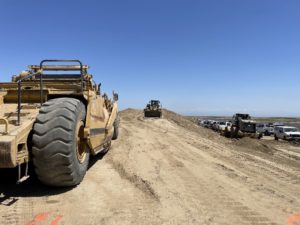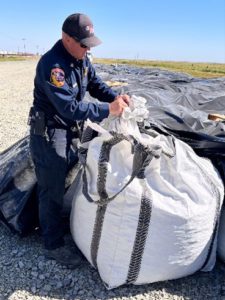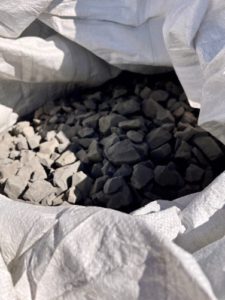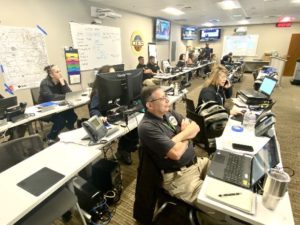Central Valley Recovery Efforts: The Return of Tulare Lake
Working around the clock to help Central Valley communities recover from extreme storms that battered California in February and March, the California Governor’s Office of Emergency Services (Cal OES) is working to ensure residents have the resources they need to recover, while also preparing for spring snowmelt from a record snowpack in the mountains.

One focus is protecting community lifelines critical to ensure residents have access to resources like food, water and medical care.
Avenue 56
In an effort to provide a strengthened public infrastructure, Cal OES has been coordinating with local officials and CAL FIRE to raise the grade of Avenue 56 in Tulare County about six to eight feet, following its complete submergence from numerous atmospheric rivers.
The communities of Alpaugh and Allensworth heavily rely on this route for daily commutes, as well as an evacuation route should flood waters rise.
The material used in this project were utilized from the ground already in the area for the California Highspeed Rail project, including from the overpass itself.
“We had a big overpass from highspeed rail,” said contractor Ira Greer. “We’re using our equipment to build this road up because the waters may rise again from future snowmelt.”


Super Sacks
Prior to the Avenue 56 project, Cal OES coordinated with Tulare County to deploy Incident Management Team 5 from CAL FIRE to aid in flood fighting efforts. In collaboration with the Department of Water Resources (DWR), the team began using super sacks to quickly patch breeched areas of local levees and rivers.
CAL FIRE helicopters deploy three super sacks at a time, which are filled with roughly 2,500 pounds of rock, sand and gravel, to effectively patch up to nine square feet of a levee breech point.
“It was trial and error,” said Clint Blackmon, assistant chief of CAL FIRE’s Tulare unit. “We use three quarter crushed rock so heavy equipment won’t sink into the levee, but it will still stem the flow of water.”
Blackmon, with his background in aviation, scouted the staging areas for super sacks that were most suitable for helicopter operations.
Now that the super sacks have served their purpose as an effective temporary measure, CAL FIRE is now backfilling the super sack patches with natural earth to ensure a completely repaired levee breach.

As precipitation lessens in the region and record snowpack remains in The Sierras, Cal OES continues to coordinate with local, state and federal agencies to aid residents in recovery efforts.
“We’re still coordinating shelters and aiding residents signing up for disaster assistance. No one agency was going to be able to handle this disaster,” said James Griffith, Emergency Services Coordinator for Cal OES. “We’re also coordinating with CAL FIRE to continually update residents in the area with preparedness and flood information message boards.”
Federal Assistance
As part of the Presidential Major Disaster Declaration, residents and business owners in Kern, Mariposa, Monterey, San Benito, San Bernardino, Santa Cruz, Tulare and Tuolumne counties that sustained losses can apply for disaster assistance:
- Online at DisasterAssistance.gov
- Calling 800-621-3362
- By using the FEMA smartphone application
- If you use a relay service, such as video relay service (VRS), captioned telephone service or others, give FEMA the number for that service
- In person at a Disaster Recovery Center
Additional Resources:
What individuals Can Expect After Registering for Federal Assistance

